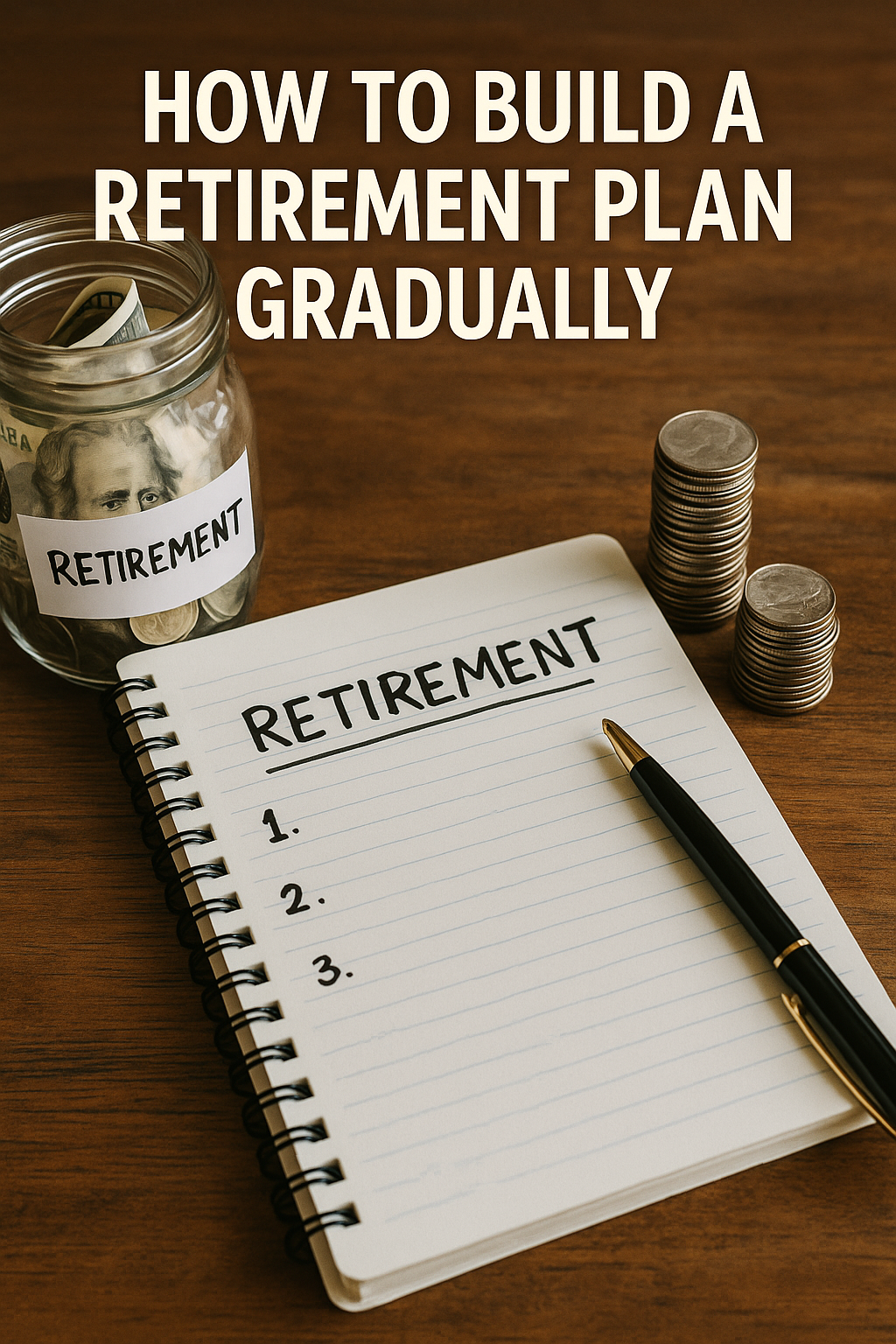When you’re in your 20s or 30s, retirement might feel like a distant concern. Between paying off student loans, saving for a house, or growing your career, it’s easy to push retirement planning to the bottom of your priority list. But the truth is, the earlier you start, the easier and more powerful your retirement strategy becomes.
In this guide, you’ll learn why early retirement planning matters, how compound interest gives you a huge advantage, and the practical steps you can take right now to build a strong financial future.
Why Start Retirement Planning Early?
The biggest advantage you have in your 20s and 30s is time. Thanks to compound interest, small contributions made now can turn into hundreds of thousands of dollars by the time you retire.
Example:
- Start at age 25: Save $200/month at 7% return = $525,000 by age 65
- Start at age 35: Save $200/month at 7% return = $245,000 by age 65
That’s a difference of $280,000, even though both people invested the same monthly amount. Time makes the money grow.
Step 1: Understand How Much You’ll Need
It’s hard to hit a target you can’t see. That’s why estimating your retirement needs is the first step.
Rule of Thumb:
- You’ll need about 70–80% of your pre-retirement income per year in retirement.
- Multiply your desired annual retirement income by 25 to get a rough estimate of how much to save.
Example:
- Want $50,000/year in retirement income?
- $50,000 × 25 = $1.25 million
This is a ballpark goal. You can refine it as you go, but having a target helps you build a plan.
Step 2: Open a Retirement Account
There are several retirement savings accounts available in the U.S., each with its own benefits.
1. 401(k)
- Offered by many employers
- Contributions are pre-tax (traditional) or post-tax (Roth 401(k))
- Often includes employer matching—free money!
2. IRA (Individual Retirement Account)
- Available to anyone with earned income
- Choose between:
- Traditional IRA: Tax-deductible contributions, taxed on withdrawal
- Roth IRA: Contributions are taxed now, but withdrawals are tax-free
3. Self-Employed?
- Consider a SEP IRA or Solo 401(k) for high contribution limits
Start with what’s available to you, especially if your employer offers matching contributions—it’s an instant 100% return.
Step 3: Decide How Much to Contribute
If retirement feels far away, you don’t need to max out your contributions immediately. What matters most is getting started.
Recommended:
- Contribute at least 15% of your income, including employer match
- Can’t do 15% now? Start with 5% and increase 1% each year
Even small increases make a big impact over time.
Step 4: Choose the Right Investments
Retirement accounts are investment vehicles—not savings accounts. That means your contributions should be invested to grow.
Common investments:
- Index funds (like S&P 500): Low-cost and diversified
- Target-date funds: Automatically adjust your risk level based on your retirement year
- ETFs and mutual funds: Great for beginners and hands-off investors
Your allocation should match your risk tolerance and time horizon. In your 20s and 30s, you can afford to be more aggressive (more stocks, fewer bonds).
Step 5: Automate Everything
Automating your retirement savings helps you stay consistent without thinking about it.
How:
- Set up payroll deductions for your 401(k)
- Schedule monthly transfers to your IRA
- Use robo-advisors like Betterment, Wealthfront, or Fidelity Go to manage investments
Once it’s automatic, saving becomes a habit you don’t need to maintain manually.
Step 6: Reevaluate Annually
Your retirement plan isn’t “set it and forget it.” Review it once a year to:
- Increase contributions as income grows
- Adjust investments as goals change
- Rebalance your portfolio if needed
Life changes—and your plan should evolve with it.
Step 7: Avoid These Common Mistakes
- Waiting too long to start: You can’t make up for lost time.
- Withdrawing early: Avoid dipping into your retirement funds unless it’s a true emergency—penalties and taxes apply.
- Not taking the match: It’s free money. Always contribute enough to get your full employer match.
- Ignoring fees: High-fee funds eat away at returns. Stick with low-cost index funds.
Bonus: Consider a Roth IRA for Tax-Free Growth
A Roth IRA is one of the most powerful tools for young investors. You pay taxes now, but your investments grow tax-free, and you can withdraw qualified funds in retirement with zero taxes owed.
You can also withdraw your contributions (not earnings) at any time, making it more flexible than other accounts.
Final Thoughts: Secure Your Future Today
The best time to start planning for retirement was yesterday. The second-best time is right now.
You don’t need to be wealthy, an expert, or in your 40s to begin. All it takes is a commitment to start small, stay consistent, and let compound interest work its magic.
Your future self will thank you—for every dollar, every contribution, and every smart choice you make today.
